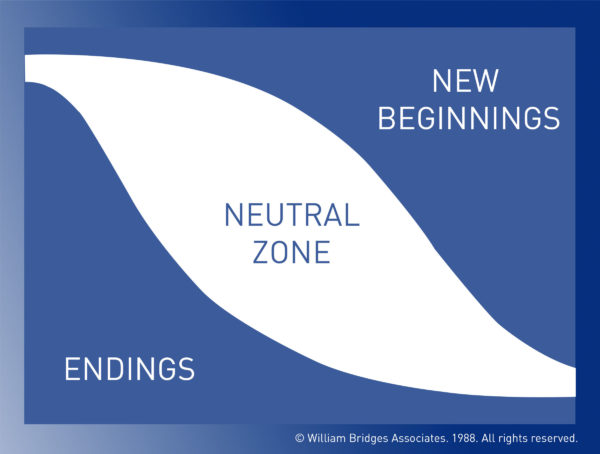--Dr. William Bridges
At the beginning of recent video and conference calls, those in positions of corporate leadership or direct supervision ask their colleagues a fundamental question--"How are you doing?"
It's a personal inquiry indicating a level of human concern that underlies the health and strength of our relationships despite social distancing.
Images posted online or in print publications are a reminder of how a younger generation is now in positions of top management or owners of companies. They feel responsible for the health and safety of their employees during this global crisis, dealing with a threat to millions of livelihoods that is not of their own making.
Dealing with sudden adversity
Professor Marvin Minsky from MIT used to say, "We don't know how to do something unless we know how to do it more than way."
One example of Dr. Minsky's idea is Ventec Life Systems teaming with General Motors to produce up to 10,000 critical care ventilators per month beginning in May this year. That's when manufacturing will be ramped up at a currently closed GM plant in Kokomo, Indiana. This is a partnership between Ventec's technology and GM's assembly experience.
While the medical and scientific professions seek to slow the spread and overtake the deadly virus known as COVID-19, we must concern ourselves with how to go about our life and business in new ways under safety guidelines from local, state, and federal officials.
For now, business strategy (e.g., Ventec/GM) and public health policy are inextricably linked.
Disappearance of the known
The headlines are about infectious diseases and their economic impact. However, the underlying story is about the severe loss of what was taken for granted four weeks ago--our health; a job in a robust economy; the ability to travel at will for business or leisure; or attend a worship service.
How about watching March Madness or the Masters Tournament on television? Not this spring.
Most of what I learned about change--and the transitions that follow--comes from the late Dr. William Bridges. The teaching was theoretical initially but soon turned practical, shedding light on personal experiences.
Change, Dr. Bridges said, was external and transition internal. He used the terms "endings" and "beginnings," not stop and start. A "neutral zone" was inserted for processing and renewal. And his writings remind us that everyone goes through a transition at their own speed.
All this is in the context of a global shock to economic, social, and healthcare systems that arrived in days, not months or years. Who had a global pandemic in their contingency plans?
One way to gain insight into what people are going through, small business owners and their workers, is to understand transition or what's happening inside in response to transformative change. For example, how does someone cutting hair days just a few days ago but can no longer do so to pay their bills? How does an enterprise make payroll without an income?
How fast will appropriated government funds get to the neediest persons and businesses?
Finding ways to deal with those realities is necessary for individuals and families to recover and move ahead. There's nothing easy about succeeding at that task, but the right actions speak louder than words.
Crossing a great divide
In the coming weeks and months, living under varying public policy guidelines, consider the following for personal or corporate discussions--
-What's our assessment of the current crisis, and what does it mean for our business or nonprofit? And keep asking that question. Know as much as possible what's happening on the ground.
-What are we losing?
-What's not over? What should we think about holding onto?
-How much of "normal" is likely to return, and when can we know?
-Amid a crisis, how does one think with a clear mind?
-What are the more reliable sources of information for our business and employees?
-How do we communicate with clarity and consistency, and how frequently?
Crisis requires moral leadership
During a period of reordering, it's our responsibility to identify and keep alive those things of most significant value, such as one's faith; commitment to family; good character; a strong work ethic; and service to others. Those values are irreplaceable.
As in all catastrophes, including outbreaks and wars, we'll get through this by showing courage and a selfless spirit, both inspiringly on display in doctors, nurses, first responders, and others who serve at significant risk for the benefit of all.
Stay well.
Strategist.com
